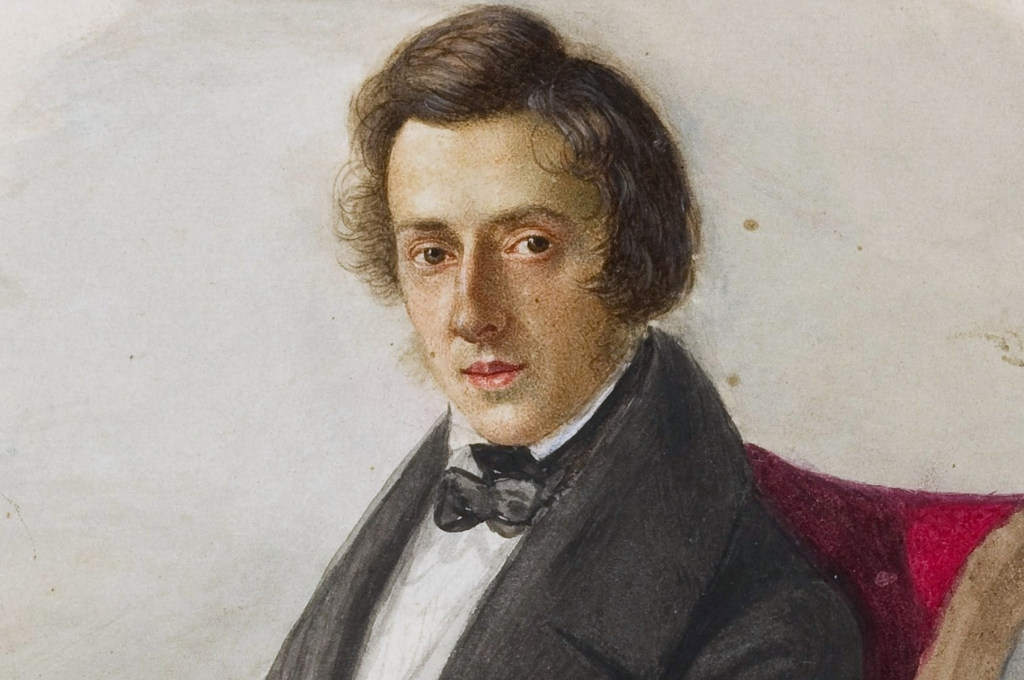Have you ever heard the story of Frédéric François Chopin’s heart? He was a world-famous Polish Romantic-era composer and virtuoso pianist who lived between 1810 and 1849. It’s an interesting story, so let’s take a quick look at Chopin’s life before we get into it.
Who is Chopin?
Frédéric Chopin was born in 1810 in the Polish village of Żelazowa Wola. Chopin spent his childhood and early teenage years in Warsaw, where he completed his musical training. Chopin relocated to Paris at the age of 21, where he would reside for the remainder of his life. He also made friends with other famous composers of the period, including Franz Liszt, a Hungarian composer.
Chopin left behind hundreds of unforgettable compositions from his short life. He passed away in Paris in 1849 at the age of 39 due to tuberculosis. He gave his first performance when he was only 7 years old and gave only 30 live performances throughout his life. The famous composer preferred private salon performances rather than giving concerts to large crowds. He also gave piano lessons.
Chopin's Legacy
Chopin’s works include a lot of piano pieces, including solo piano works like etudes, mazurkas, polonaises, and nocturnes. Many of his compositions reflect his Polish roots. If you’re not familiar with Chopin’s magical melodies, one of the most important artists of the Romantic era, I suggest you start with his Nocturne in C-sharp minor, which is also featured in the movie The Pianist, Waltz in A Minor, Waltz in C-sharp minor, Polonaise in B-flat Minor (‘Adieu’), and of course, Fantaisie Impromptu. I’m sure you’ll find yourself coming back to these tracks again and again.
Heart in a Jar
Let’s chat about the incredible story of his heart.
Frédéric Chopin had a long battle with tuberculosis. However, over time, he grew weaker as his disease progressed. At the age of 39, he could not fight any longer and passed away at his home in Paris. The Romantic era’s most gifted artist left behind hundreds of musical compositions.
In the 19th century, there was a common phobia called “tafephobia,” which was the fear of being buried alive without dying. Back then, lots of people were afraid of being buried alive without realizing they were still alive. They’d wake up in a dark, cold grave after a few days, unable to hear anyone. Some people even wanted an alarm system installed in their coffins. Some other well-known names to mention are the Russian writer Nikolai Gogol, the German philosopher Arthur Schopenhauer, the French painter Auguste Renoir, the American Presidents George Washington, the Swedish chemist Alfred Nobel, and the Dutch writer Hans Christian Andersen, to name but a few.
Chopin was one of those who experienced this fear and made arrangements accordingly before he died. He asked his sister Ludwika Jędrzejewicz, who came to Paris shortly before his death, to make sure he was dead before he was buried.
Chopin also saw the human heart as a symbol that keeps the soul alive. That’s why the idea of burying his heart made him uneasy.
I’ve heard that even the great composer’s last words were about this subject. Before he passed away, he told his sister, “Promise me you’ll have them cut me open so I won’t be buried alive.”
His sister, of course, did as he asked and had his body autopsied after he died. After the doctor removed the heart and placed it in a jar filled with alcohol, Ludwika brought it back to her hometown of Warsaw, crossing all the country borders between them by illegal means. So, there were thousands of kilometers between Chopin’s body, which is actually buried in the Père Lachaise cemetery in Paris, where he spent his adult years and died, and his heart, which was buried in the wall of a church in Warsaw, where he was born and raised.
Years passed, and during the Second World War, a Nazi commander who said he admired Chopin dug the heart out to protect it, but after the war it was returned to the church.
The story of the famous composer’s heart in a jar didn’t end there. After some time had passed, in 2014, questions started to arise about what caused Chopin’s death. However, the jar was off-limits, and the heart couldn’t be examined. Scientists could only take high-quality photos of the heart without removing it from the jar. However, the initial diagnosis of tuberculosis remained unchanged, and the final report said it was “highly probable” that Chopin had chronic tuberculosis and that this was the cause of his death. Some people still aren’t convinced, and they even argue that the heart doesn’t really belong to Chopin. Who knows, maybe in another 50 years, when the heart can be re-examined, new information, diagnoses, or discoveries will emerge.
If you’re a music lover planning a trip to Poland or just curious about Chopin’s heart in a jar, you can find it at the Church of the Holy Cross in Warsaw. It’s thought to contain cognac and is currently on display there. If you’re in Warsaw, you should also check out the Frédéric Chopin Museum. It has Chopin’s last piano, his handwritten sheet music, and lots of other memorabilia from his life.
If this article piques your interest, you might also enjoy our piece on Bach. And don’t forget to check out the Piri Guide app for more.




